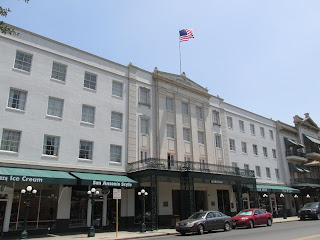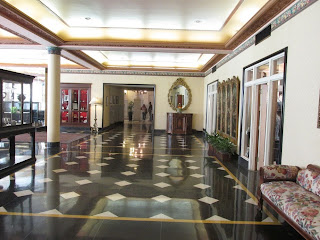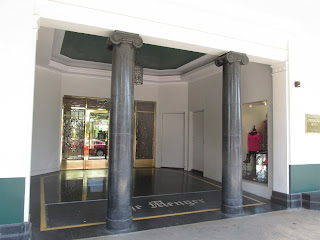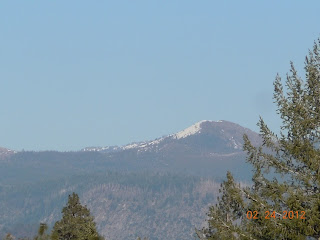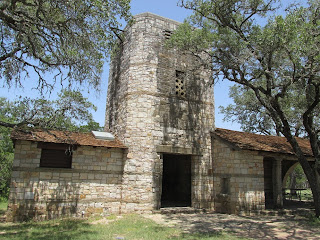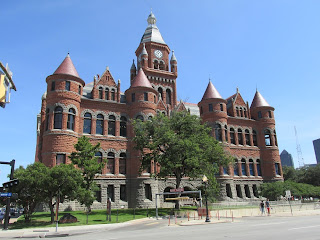The church shown in this photo article, the Cathedral of Saint Paul, is over one hundred years old. This magnificent cathedral, built in the Classical Renaissance style with it's marble pillars, granite walls and stained glass, compares today to any of the great cathedrals built in Europe.
The Cathedral of St.Paul is located appropriately in St. Paul Minnesota on the east bank of the Mississippi River. This beautiful cathedral is filled with history. It's a must stop if your travels take you to or near St. Paul Minnesota. The address is 239 Selby Ave, St Paul, MN . It's estimated that a quarter million people tour the cathedral annually.
 |
| Cathedral of St. Paul |
Archbishop John Ireland
The church you see today was inspired by Archbishop John Ireland in 1904. Born in Ireland, he came to the St. Paul area with his family. The Most Reverend John Ireland served as the Diocese of St. Paul's first Archbishop from 1888 to 1918, the year that he died.
One of the most enduring accomplishments of the Archbishop was his bringing of Irish Catholic families from the slums to the vast farmlands of Minnesota. There they were able to start anew and out of this were established new schools and new parishes. Reportedly, during his tenure and with the many Irish Catholic's moving to the area, five new dioceses were created in 1889. Archbishop John Ireland was also very well known for his work in developing education in his parishes.
 |
| View of Cathedral of St. Paul from another angle |
One of the Largest Cathedrals in The United States
In addition to the beautiful stained glass, the marble pillars and the shining granite walls mentioned above, the Cathedral of Saint Paul features a stunning gold dome.
The dome of the cathedral shown in this article measures 76 feet in diameter and 186 feet high. The granite walls mentioned above were obtained from a quarry in nearby St. Cloud. The church has twenty-four stained glass windows.
 |
| Beautiful gold dome at Cathedral of Saint Paul |
St. Paul Minnesota
The very first name of the settlement that eventually became St. Paul was Pig's Eye. Sometimes referred to as Pig's Eye Landing. How did a settlement get such a name?
There was a French-Canadian whiskey trader, Pierre "Pig's Eye" Parrant, who the story goes led squatters to the settlement. In fact, Pierre was the first European to live inside the modern day border of St. Paul Minnesota and built the settlements first structure which as you might expect was a tavern. Pig's Eye did a pretty robust business selling bootlegged whiskey to soldier and Indian alike. He operated this way until the army at Fort Snelling chased him away in 1840. A cave which Pierre operated from which had fresh flowing water was used by soldiers for a store house after his eviction and eventually became a tourist attraction.
Today, tourists to St. Paul can view an historical marker at the site of the old Pig's Eye Landing. The location is along Shepard Road, about one quarter mile southwest of the intersection of Randolph and Shepard Road.
 |
| Minnesota State Capitol Building |
St. Paul Minnesota today has more than 225 notable surviving buildings. What was once wilderness prior to the Civil War years is Summit Avenue. This street is known for it's many historic structures which includes homes, churches and schools. Summit Avenue offers a fun and educational walking tour and the avenue represents two National Historic Districts and two City of Saint Paul Heritage Preservation Districts.
Below are links to additional Western Trips articles you may find interesting...
The Hopperstad Stave Church Replica
Santa Fe's Loretto Chapel
More Sites to Visit in the Twin Cities Area
There are many great places to visit in the Twin Cities area. One of these is historic Fort Snelling. Located on top of the bluff overlooking the river junction of the Mississippi and Minnesota Rivers, Fort Snelling served the U.S. military for over 120 years. Today, Fort Snelling, located just a few miles east of the Twin Cities International Airport, is a National Historic Landmark and is operated by the Minnesota Historical Society. Here you'll see an amazing display of artifacts that tell the story of the military, the Native Americans and the fur trade. More information can be found at www.historicfortsnelling.org
For those planning a visit to Minnesota you'll do well to check out the Great River Road National Scenic Byway. Here is a 575 mile scenic road that follows the Mississippi River from the head waters at Itasca State Park down to the Minneapolis/ St. Paul area. This is perfect for a summer visit to Minnesota as the scenic byway winds through forests, passes reservoirs and takes you to all the great sites to see around the Twin Cities region.
(Article and photos copyright 2013 Western Trips. Photo of Fort Snelling Round Tower from the public domain)












